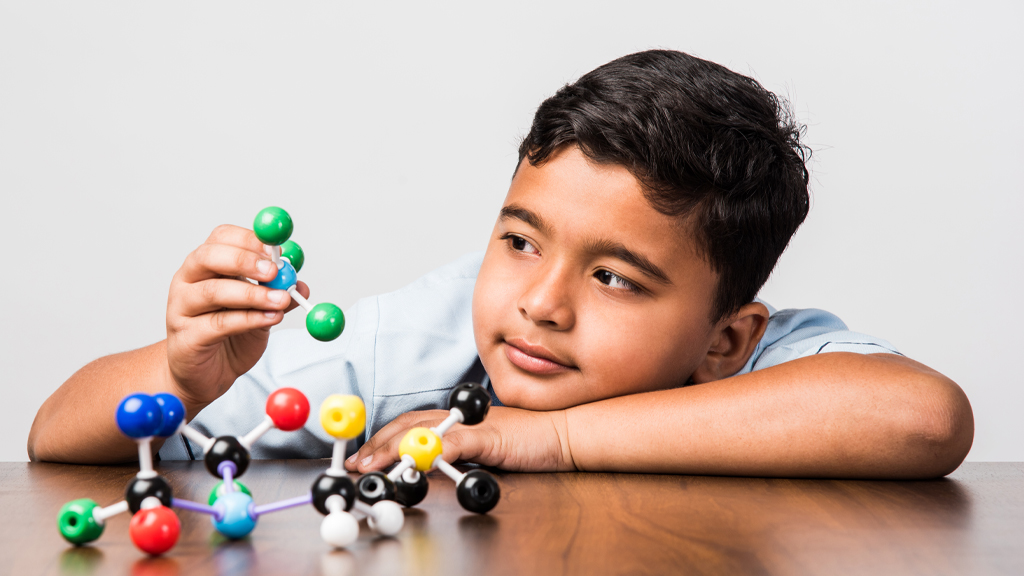Elementary Informal Education | Daily Do
How Do Seeds Get Around?

High School | Daily Do
How Can Vaccinating One Population Affect Another?

phenomena
Making Everyday Phenomena Phenomenal
Using phenomena to promote equity in science instruction
Formative Assessment Probe
Chemical Bonds
By Page Keeley

Elementary Middle School Informal Education | Daily Do
Why Do They Visit the Flower?

Archive: Transforming Science Learning: Don't Turn the Page Yet! May 20, 2020
 Explore interactive reading strategies to engage students that connect children's books to the practices of science and engineering.
Explore interactive reading strategies to engage students that connect children's books to the practices of science and engineering.
 Explore interactive reading strategies to engage students that connect children's books to the practices of science and engineering.
Explore interactive reading strategies to engage students that connect children's books to the practices of science and engineering.
 Explore interactive reading strategies to engage students that connect children's books to the practices of science and engineering.
Explore interactive reading strategies to engage students that connect children's books to the practices of science and engineering.
 Explore interactive reading strategies to engage students that connect children's books to the practices of science and engineering.
Explore interactive reading strategies to engage students that connect children's books to the practices of science and engineering.
Transforming Science Learning: NASA’s Next Generation STEM Resources Are Ready for Launch! May 6, 2020
 NSTA's Professional Learning Division and NASA’s Next Generation STEM Team invite you to learn about the NASA Office of STEM Engagement’s new Commercial Crew Program Launch Kit. Explore how these STEM investigations use science and engineering practices to engage students in applying science ideas to solve problems through the engineering design process.
NSTA's Professional Learning Division and NASA’s Next Generation STEM Team invite you to learn about the NASA Office of STEM Engagement’s new Commercial Crew Program Launch Kit. Explore how these STEM investigations use science and engineering practices to engage students in applying science ideas to solve problems through the engineering design process.
 NSTA's Professional Learning Division and NASA’s Next Generation STEM Team invite you to learn about the NASA Office of STEM Engagement’s new Commercial Crew Program Launch Kit. Explore how these STEM investigations use science and engineering practices to engage students in applying science ideas to solve problems through the engineering design process.
NSTA's Professional Learning Division and NASA’s Next Generation STEM Team invite you to learn about the NASA Office of STEM Engagement’s new Commercial Crew Program Launch Kit. Explore how these STEM investigations use science and engineering practices to engage students in applying science ideas to solve problems through the engineering design process.
 NSTA's Professional Learning Division and NASA’s Next Generation STEM Team invite you to learn about the NASA Office of STEM Engagement’s new Commercial Crew Program Launch Kit. Explore how these STEM investigations use science and engineering practices to engage students in applying science ideas to solve problems through the engineering design process.
NSTA's Professional Learning Division and NASA’s Next Generation STEM Team invite you to learn about the NASA Office of STEM Engagement’s new Commercial Crew Program Launch Kit. Explore how these STEM investigations use science and engineering practices to engage students in applying science ideas to solve problems through the engineering design process.
 NSTA's Professional Learning Division and NASA’s Next Generation STEM Team invite you to learn about the NASA Office of STEM Engagement’s new Commercial Crew Program Launch Kit. Explore how these STEM investigations use science and engineering practices to engage students in applying science ideas to solve problems through the engineering design process.
NSTA's Professional Learning Division and NASA’s Next Generation STEM Team invite you to learn about the NASA Office of STEM Engagement’s new Commercial Crew Program Launch Kit. Explore how these STEM investigations use science and engineering practices to engage students in applying science ideas to solve problems through the engineering design process.



